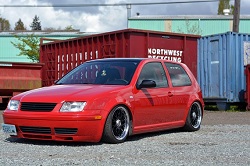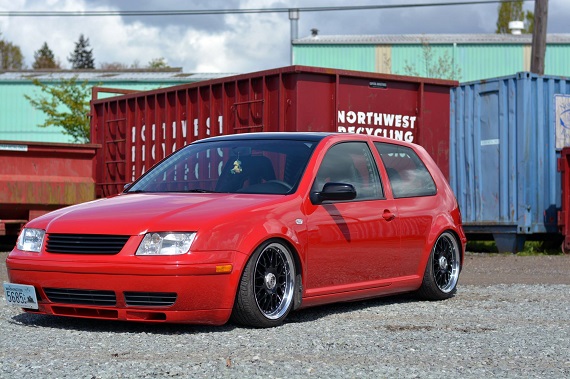Let’s discount, just for a moment, the reputation of the fourth generation water-cooled, front engined platform from Volkswagen. Yes, they’re known for not having the best build quality, and they were a bit pudgy. The electrics were sketchy and Volkswagen’s venerable 1.8T, which found its way into nearly every VAG product in the late 90s and early 00s, is certainly not without fault. But in many ways, the Mk.4 platform offered some exciting options for the Volkswagen faithful. First, the introduction of the turbocharged engine into the platform redefined the possibilities of the hot hatch. It was available not only in the top-spec GTi, but you could get a 4-door 1.8T, too – a first for Volkswagen, who had offered hot 4-door hatches in Europe but not the U.S. previously. Then, in 2002, Volkswagen upped its game even more with the introduction of the 25th Anniversary Edition in Europe. “But the GTi didn’t come out until 1983” U.S. fans said, forgetting that 1977 was the launch year of the 1.6 original in Europe. It seemed, for some time, that the U.S. would get snubbed again. After all, it wouldn’t be very smart for them to offer a 25th Anniversary Edition of a car that didn’t exist here, and “19th Anniversary” doesn’t have the same ring. But then, at the New York Auto Show in 2002, Volkswagen surprised U.S. fans by offering the near-identical package to them. The name was the GTi 337 Edition; the name harkened back to the original project code for the Golf GTi. Beefed up with 180 horsepower, a 6-speed manual, an awesome set of Recaro seats, aero tweaks and with some awesome shot-peened BBS RC wheels, it was an instant hit. Volkswagen sold 1,500 of these models to U.S. fans, and then when they had sold out, recreated the magic in 2003 with colorful options in the 20th Anniversary Edition. Today we’re looking at the 337 though, and I’ve found three for sale in varying states. 13 years on, are these hot hatches still appealing?
Tag: AWP
I’m a huge fan of many forms of motorsport, but I consider Formula 1 to be the pinnacle of the sport. But, of course, Formula 1 is an unrealistically expensive form of racing for nearly all, and even within the sport there are only 5 or 6 that could win on any given Sunday. On what many would consider the other end of the sport, NASCAR offers millions of adoring fans a spectacle beyond anything Formula 1 can offer. The engineering is kept more affordable and the racing is much closer; even towards the end of the season, the title is often up in the air as nearly any one of the top teams could field one or two drivers that might win. It’s specifically the variation and show that bring fans to NASCAR and will keep them coming. Are the two mutually exclusive? No, I don’t think they are – I might not be the biggest fan of NASCAR, but I can appreciate that it takes a serious talent to be able to drive those cars in the manner in which they are driven.
In many ways, the European tuning scene is very similar. Track enthusiasts typically baulk at the show cars, but there is something that unites them; a passion for cars. That passion can be different and manifest itself in many ways. For some, the ultimate car is a perfectly original example in pristine condition; others modify their cars for track use, compromising their daily driveability. But there is another group of enthusiasts that create show pieces – individualized cars with exhaustive detail work to set themselves apart from the crowd and draw smiles from enthusiasts. These show cars have become and increasingly popular and widespread and show both the range and breadth of expression in automotive passion. One of the most avid groups of enthusiasts are Volkswagen owners, and few cars capture the Zeitgeist of the Volkswagen scene quite as well as this car does:



